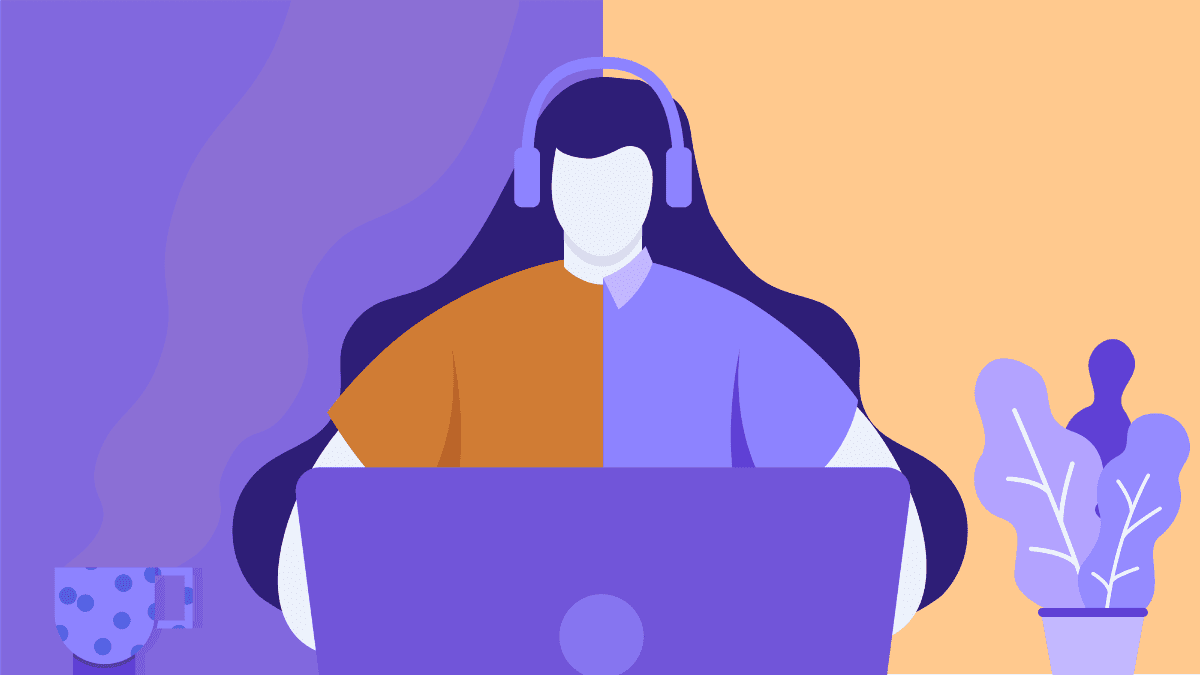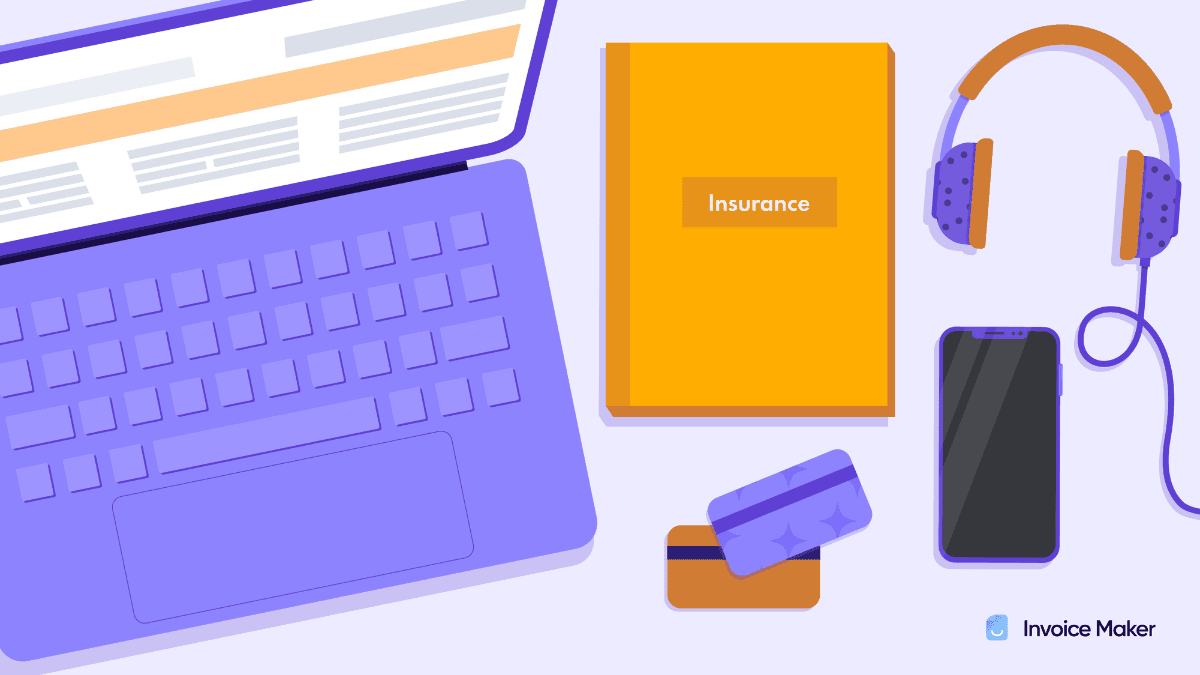How to Get Started as a Freelance Illustrator

Freelance illustration is a compelling field for artists who want reliable income, in-house illustrators who crave more freedom, and budding creatives who are still deciding what modality they want to work in. If you’re toying with the idea of becoming a freelance illustrator, it’s wise to start sketching out the details before making any big moves—you want to have all the information about the role so you can make an informed decision about whether it’s a good fit for you.
Make a Free Invoice NowWhat is a Freelance Illustrator?
First things first: what exactly is a freelance illustrator? The title means different things to different people, so let’s explore the possibilities.
The broadest definition of the role is simply a freelance artist—someone who creates original artwork for clients. Within this umbrella definition you’ll find a wide range of industry-specific roles and responsibilities, which we’ll delve into in detail below.
It’s important to distinguish between the work of a graphic designer (who works with design software to create visual concepts) and an illustrator, who creates original designs. Some illustrators work in traditional mediums like drawing and painting, while others work in digital mediums—and the most versatile do it all.
Illustrator Roles and Responsibilities
Illustrators are essential to a huge array of industries. Think about how often you see art as you walk down the street or click through the internet. Once you start noticing it, you’ll realize that we are surrounded by images, and many of them are original, created by illustrators.
Your scope of work as an illustrator will often overlap and/or intersect with that of graphic designers. However, your specific niche is original art, particularly that which is created by hand.
Marketing and advertising are the biggest sources of illustration jobs, particularly for freelancers. While big firms employ in-house illustrators, it is often possible for freelancers to work on a contract basis, or to work directly for smaller clients, creating images that are used in print or digital advertisements and marketing campaigns. For example, the award-winning 2018 “Here to Create” campaign for Adidas was created by an animator-illustrator.
Other spaces for illustration work are in editorial and book art (where you’d be creating visual materials for blogs, magazines, and newspapers), product and apparel design (where you’d work with a design team to create artwork), and packaging illustration (think cereal box characters and book covers). There are also a tremendous number of small one-off jobs in illustration, ranging from creating logos and images for business cards and websites to corporate branding packages.
Qualifications
While there are no formal educational requirements for freelance illustrators, having the right skill sets and experience can lead to success as a freelance creative.
Skills
Without these, you don’t have much to start with. Visual art skills are an interesting combination of innate talent and dedicated practice. If you are lucky enough to have been born with an artistic gift, congratulations—you’re in possession of something that cannot be bought or worked for, and it can serve you in the freelance illustration game. To create art that is consistent enough for professional use, however, you’ll also need discipline and work ethic—two things that can be acquired. An honest assessment of your balance of talent and discipline is like taking inventory of your professional tools—a project best completed before going into business.
Education
Some successful illustrators are highly educated, with BAs in illustration or studio MFA degrees and years of formal creative practice in residencies. Others are entirely self-taught. Freelance illustration is a wonderfully inclusive space in this way; if you’re good enough to do the work, you’ll get the work, degree or no degree.
Training
If you’re an artist looking to break into illustration, there are resources out there to help you hone and professionalize your talents into a marketable skill set. Taking or auditing classes at an art school as a non-matriculated student is a great place to start—there are often online options to explore if going to in-person school isn’t realistic. You can also find a la carte training resources on Udemy or Domestika, which are platforms that allow freelance instructors to deliver online courses in a huge variety of design and creative subjects. If you’re trying to keep your training budget as lean as possible, don’t discount YouTube—there is a huge well of resources if you’re willing to put the time into sifting through what’s out there.
Common Tools Needed for the Job
To get started as a freelance illustrator, you’ll need to set up your professional studio with an initial investment of basic tools, tech, and gear. As you establish yourself and develop a specialty, you’ll very likely want to add to this list, but here’s the bare minimum you’ll need to get started.
Laptop
At some point, you’ll want to upgrade to a laptop with Retina display (and probably a desktop monitor as well), but for now, you can start with what you have. If you’re buying a new laptop, prioritize connection ports, a CPU of Core i5 or greater, and a minimum of 4GB of RAM.
Graphics tablet
An iPad can work, but a dedicated graphics tablet like a Wacom Intuos or XP-PEN Artist24Pro will uplevel your work by allowing you to use the stylus to directly create digital art.
Desk
You only get one back—don’t break yours by working on your couch. An ergonomic desk chair or architect’s table is amazing, but a simple hard-backed chair and table is definitely better than nothing.
Digital software
Adobe Illustrator is industry standard—start with that. As you build your client list and portfolio, you may want to add on others like CorelDraw and Krita, too.
High-speed internet access in your workspace
Whether you work from home, use WeWork, or are your corner coffee shop’s resident illustrator, you’re going to need good internet for passing large files back and forth between clients and creative teams.
Job Outlook: Future of Freelance Illustrating
As the professional world becomes more and more remote, the job outlook for freelance illustrators is good. The U.S. Bureau of Labor Statistics projects 14% employment growth from 2020 to 2030 for fine artists, and while this is not limited to illustrators, it’s a solid indication of occupational outlook.
On the other hand, the use of AI for illustration (and the tech to support doing so) is on the rise, which has the potential to radically change the illustration field. While economic futures are difficult to predict with accuracy, what is fair to say is that private industry’s need for art is not likely to dry up anytime in the foreseeable future.
Pros and Cons of Becoming a Freelance Illustrator
For an artist, there are only so many professional options that offer financial security. If you have a family to provide for—or if you just like a certain standard of living—it can be hard to make a go of it as a studio artist, living from residency to residency. One of the most valuable aspects of a career as a freelance illustrator is the ability to make private industry money with your artistic skills.
On the other hand, monetizing your creative practice can turn it into…well, a job. If you’ve been working a non-creative job and dreaming of drawing for a living, the reality can be a bit different than the fantasy. As a freelance illustrator, you’re typically taking direction from clients or design teams, not conceptualizing your own pieces. When your client wants you to make changes to an illustration, you might disagree with them, but it’s your professional responsibility to serve the client’s needs and desires, not to align with your own artistic integrity.
Freelance vs. Salaried Illustrator – What’s Better?
The obvious trade-off between freelancing and working in-house is security for freedom. As a salaried illustrator, you get a paycheck every month that you can predict and rely on, along with health insurance and other employee benefits. Your workspace overhead—from the office rent to the toilet paper—is covered by your employer, and they are responsible for procuring clients and jobs for you to work on. Sounds like a no-brainer, right? Maybe.
As a freelance illustrator, your income is entirely dependent on your ability to solicit work, and it may vary wildly from month to month (or year to year). There’s no explicit advancement track, and you’ll have to cover your own insurance and retirement savings. You do, however, have complete autonomy over how much and what kind of work you take. If you don’t like a prospective client’s energy, you don’t have to take them on—and you don’t owe anyone an explanation for it. You can curate your client list to reflect particular styles and modalities of illustration that excite you, and if you want to take three weeks off to take a drawing class in Italy, you can do that.
As a freelancer, you’ll also keep 100% of the money you bill. Your taxes will be more complicated than a salaried employee’s, but you’ll be able to legally write off expenses like work-related meals, travel, and tech. It’s only you who’s keeping the lights on, metaphorically and literally, but that responsibility brings with it a lot of freedom.
Freelance & Salary Rates
Will you make more money as a freelancer, or an in-house illustrator? It depends.
Freelance
As a freelancer, your income will be determined by your rate and your volume. Because freelance illustration businesses range so widely (from folks who take a few side jobs a year to powerhouse celebrity illustrators who charge ultra-premium rates), hourly and annual reports aren’t very precise—but averages range from $21-$45 an hour.
Salary
According to the U.S. Bureau of Labor Statistics, the average annual salary for an in-house illustrator is about $65,000.
Is Freelance Illustration a Good Fit for You?
If you have a healthy relationship with financial risk and a strong belief in your artistic abilities, freelance illustration may be an exciting way for you to make money. To get started, you don’t have to quit your job—you can dip your toe in by taking your first small freelance job and noticing whether you feel thrilled or stressed by being in charge of everything. Then, scale accordingly.


